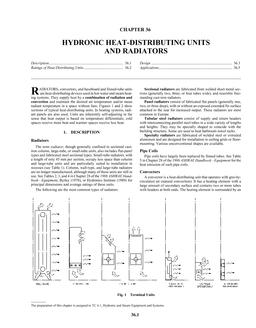Heat transfer in a roof insulation assembly used in metal buildings was investigated experimentally and using computational fluid dynamics (CFD) based modeling. The experimental study was performed using a 2.445 × 3.054 m (96.25 × 120.25 in.) test frame for a Standing Seam Roof (SSR) assembly. The SSR configuration involved installing NAIMA (North American Insulation Manufacturers Association) 202-96 R19 faced fiberglass insulation over and perpendicular to 0.203 m (8 in.) high metal roof purlins with 0.0667 m (2.625 in.) flanges. Two purlins were spaced 1.524 m (5 ft) on center in the test frame creating three cavities in the metering area. The purlins were connected to metal roof panels using standing seam panel clips designed to create approximately 0.0349 m (1.375 in.) of space between the top of the purlin and the bottom of the roof panel. This space contained both compressed fiberglass insulation and 0.0254 m (1 in.) high by 0.0762 m (3 in.) wide extruded polystyrene (XPS) foam block insulation. The foam blocks were installed between the top of the fiberglass insulation layer and the roof panel.
Heat flow through the test frame was measured in a hotbox set-up with the insulation side of the test frame facing air kept at an average temperature of 311.2 K (100.5°F) and the roof side facing air maintained at an average temperature of 283.4 K (50.4°F). Mathematical modeling involved the formulation of the steady-state, three-dimensional natural convection and heat transfer problem in the SSR assembly. The model accounted for the relevant geometrical complexities and allowed for variations in fiberglass insulation thermal conductivity with density (i.e., compressed thickness). The governing transport equations and the boundary conditions were solved numerically using CFD software Fluent. Excellent agreement was observed between model predictions of the overall heat transfer coefficient (U-factor) and calculations based on experimentally measured values. The model predicted U-factor was 0.369 W/m2·K (0.065 Btu/ft2·h·°F) when natural convection in various air gaps was accounted for and 0.358 W/m2·K (0.063 Btu/ft2·h·°F) when the air was assumed to be stagnant. The measured value was 0.349 W/m2·K (0.061 Btu/ft2·h·°F).
Units: Dual
Citation: ASHRAE Transactions, Vol. 116, pt. 1, Orlando 2010
Product Details
- Published:
- 2010
- Number of Pages:
- 12
- File Size:
- 1 file , 1.2 MB
- Product Code(s):
- D-OR-10-017


